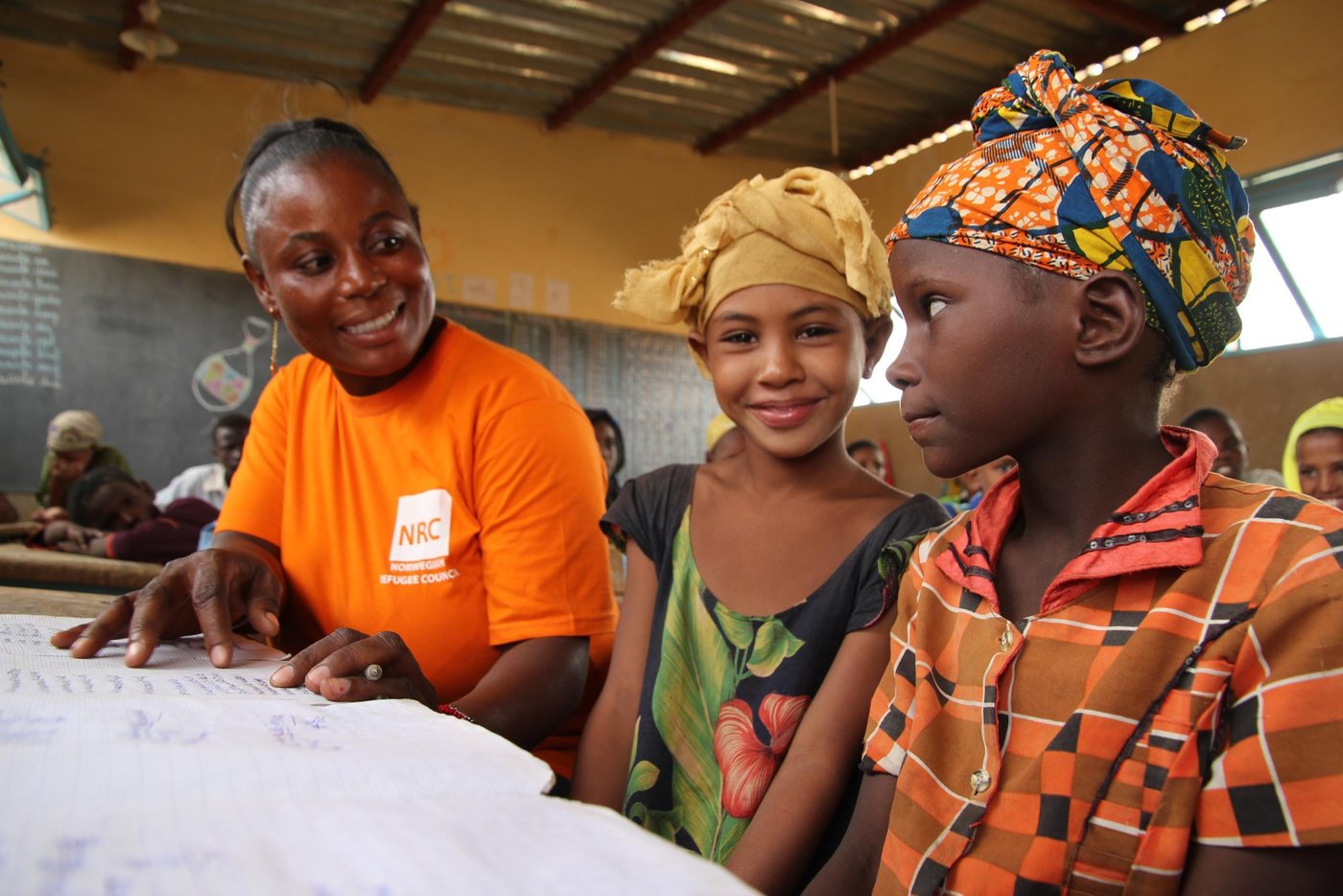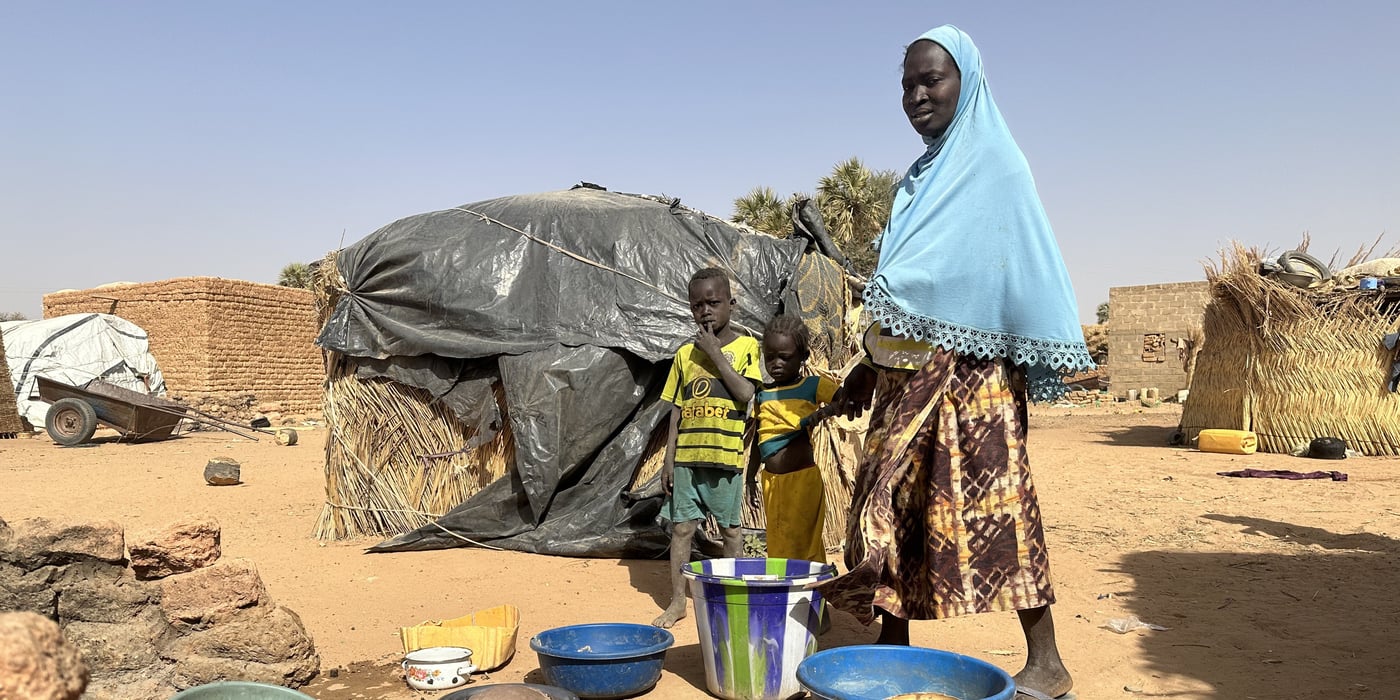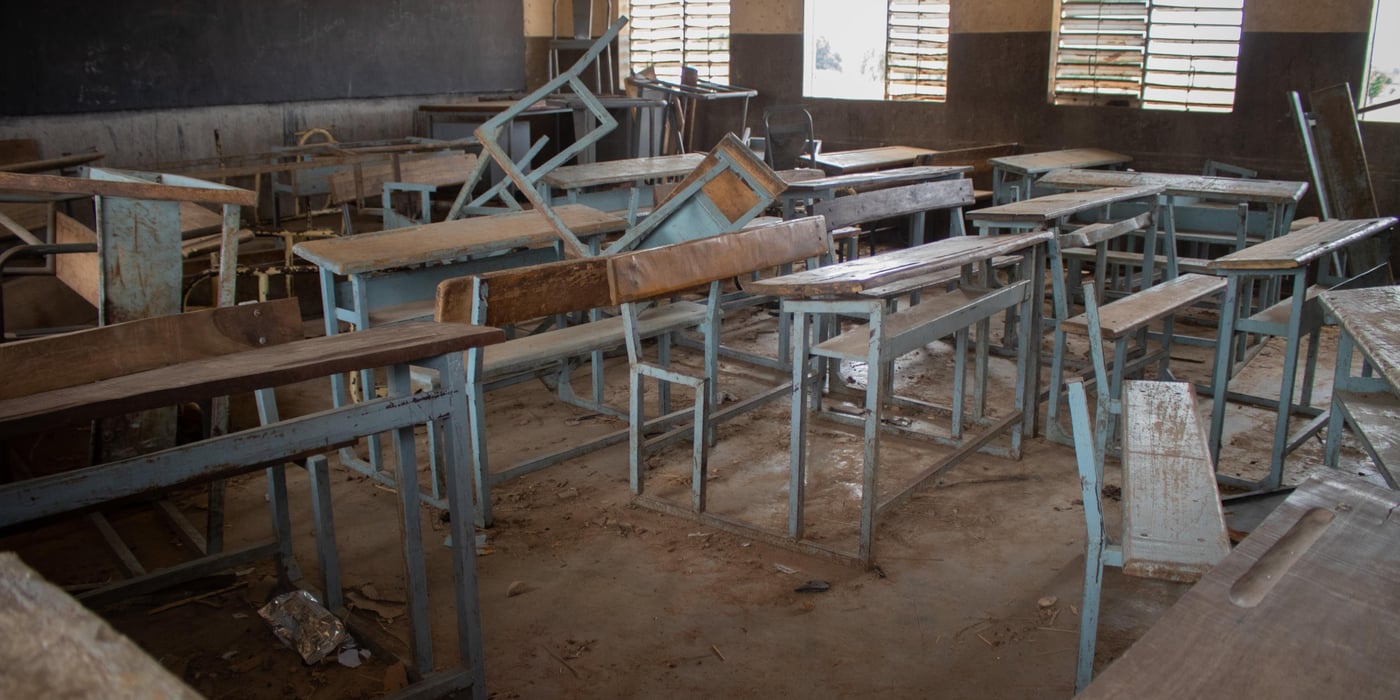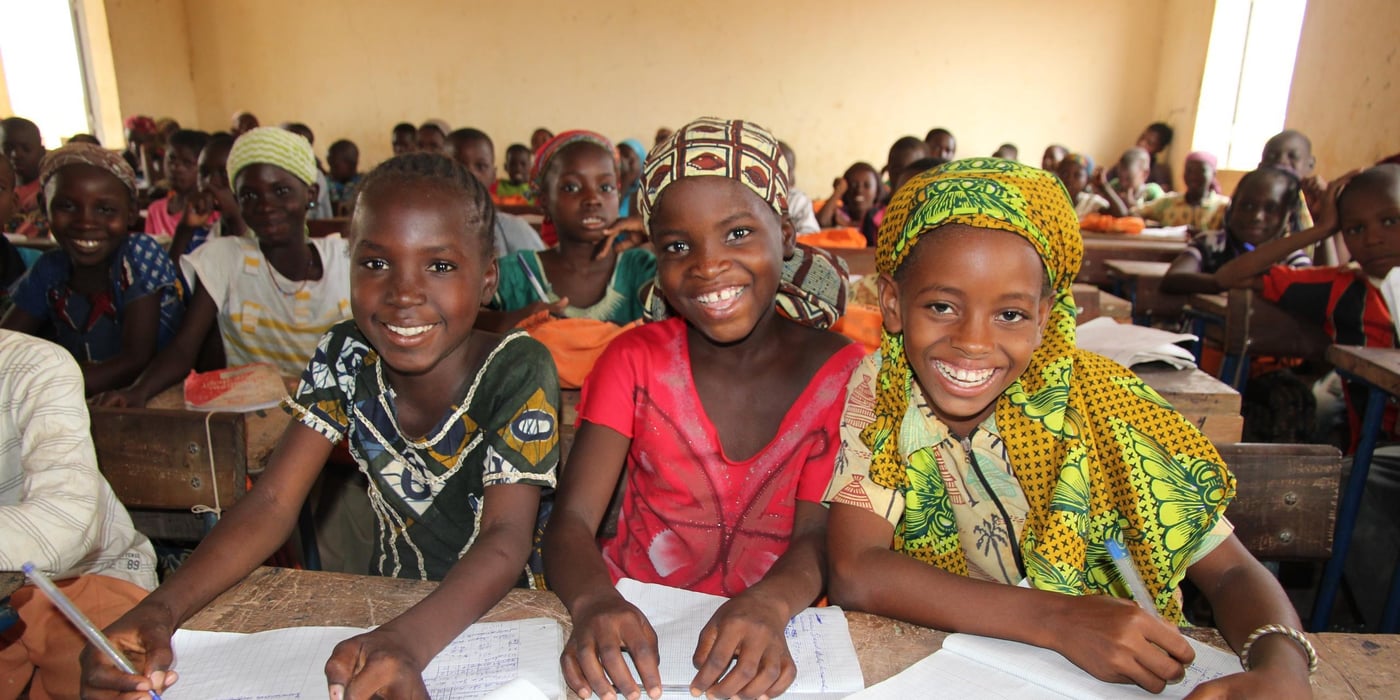
- Jeg liker å gå på skolen, og favorittfaget mitt er matte, sier Aissata Traore (10).
Hun går i tredje klasse ved skolen Bargondaga i Nord-Mali. Skolen er støttet av Flyktninghjelpen, som har utdanningsprogrammer i flere byer og områder i Malis konfliktrammede nordområder.
Aissata har en yngre søster som også går på skolen, pluss en liten bror og to yngre søstre som er under skolealder.
- Jeg drømmer om å bli lærer, eller kanskje en prinsesse, sier hun.
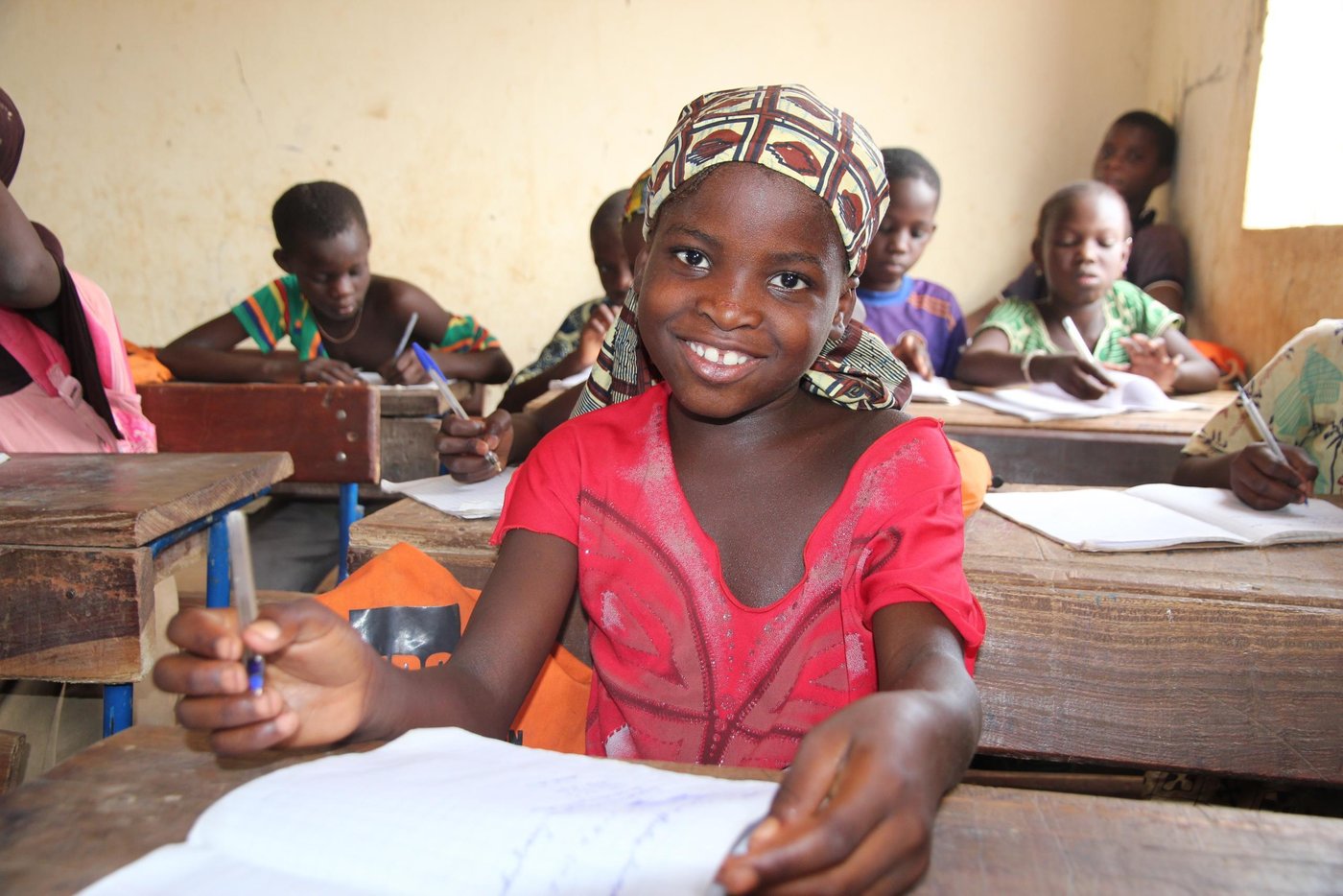
Tar igjen tapt skolegang
I Nord-Mali er mange skoler ødelagte av krigføring, det er stor mangel på lærere og mange lever i dyp fattigdom. Flyktninghjelpen driver flere utdanningsprogrammer for konfliktrammede barn i området.
Skolen har 181 elever fra første til sjette klasse, og 116 elever fra syvende til niende klasse. Flyktninghjelpen har støttet skolen med skolesekker, bøker og skrivesaker for de yngre elevene, som familiene ikke har råd til å kjøpe selv. Elevene kan velge mellom vanlig undervisning og intensivklasser der de kan ta igjen tapt skolegang.
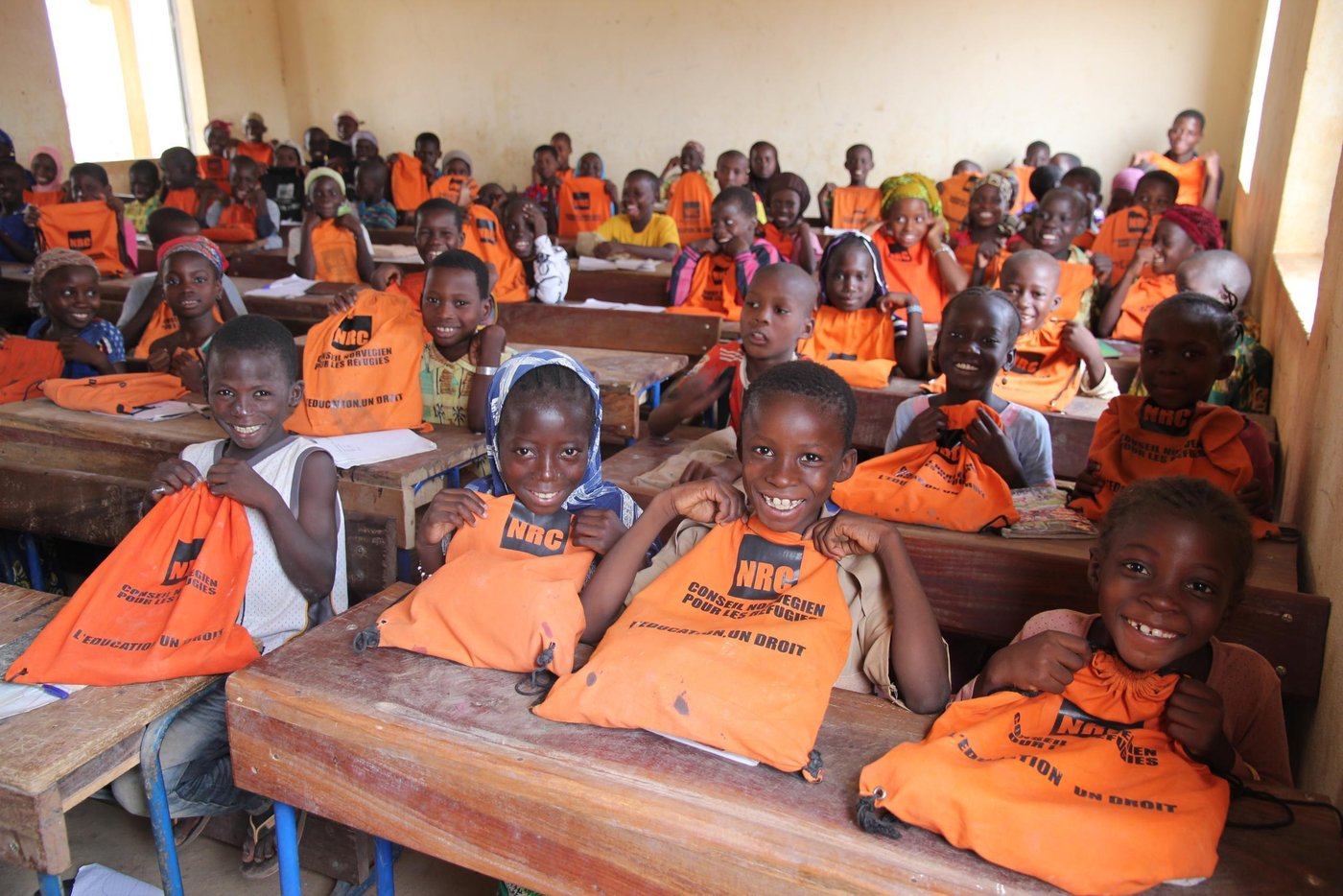
Blant klassens flinkeste
Kayma (12) har vært elev i en av intensivklassene. Etter at han ble uteksaminert kunne han innrulleres i den offentlige skolen i landsbyen. Han går nå i fjerde klasse, og er en oppvakt gutt.
- Jeg begynte sent på skolen fordi jeg ikke hadde noe fødselssertifikat, men nå skal jeg jobbe hardt for å lykkes, sier han, full av pågangsmot.
Og etter bare syv måneder på den offentlige skolen, er han allerede den nest flinkeste av de 78 elevene i klassen sin! Skolen er viktig for Kayma. Før han drar hjemmefra om morgenen, bytter han klær fra de han leker i hjemme, til noe finere. Han liker å se ordentlig ut på skolen.
- Favorittfagene mine er skriving og historie. Jeg vil bli lærer, sier Kayma.
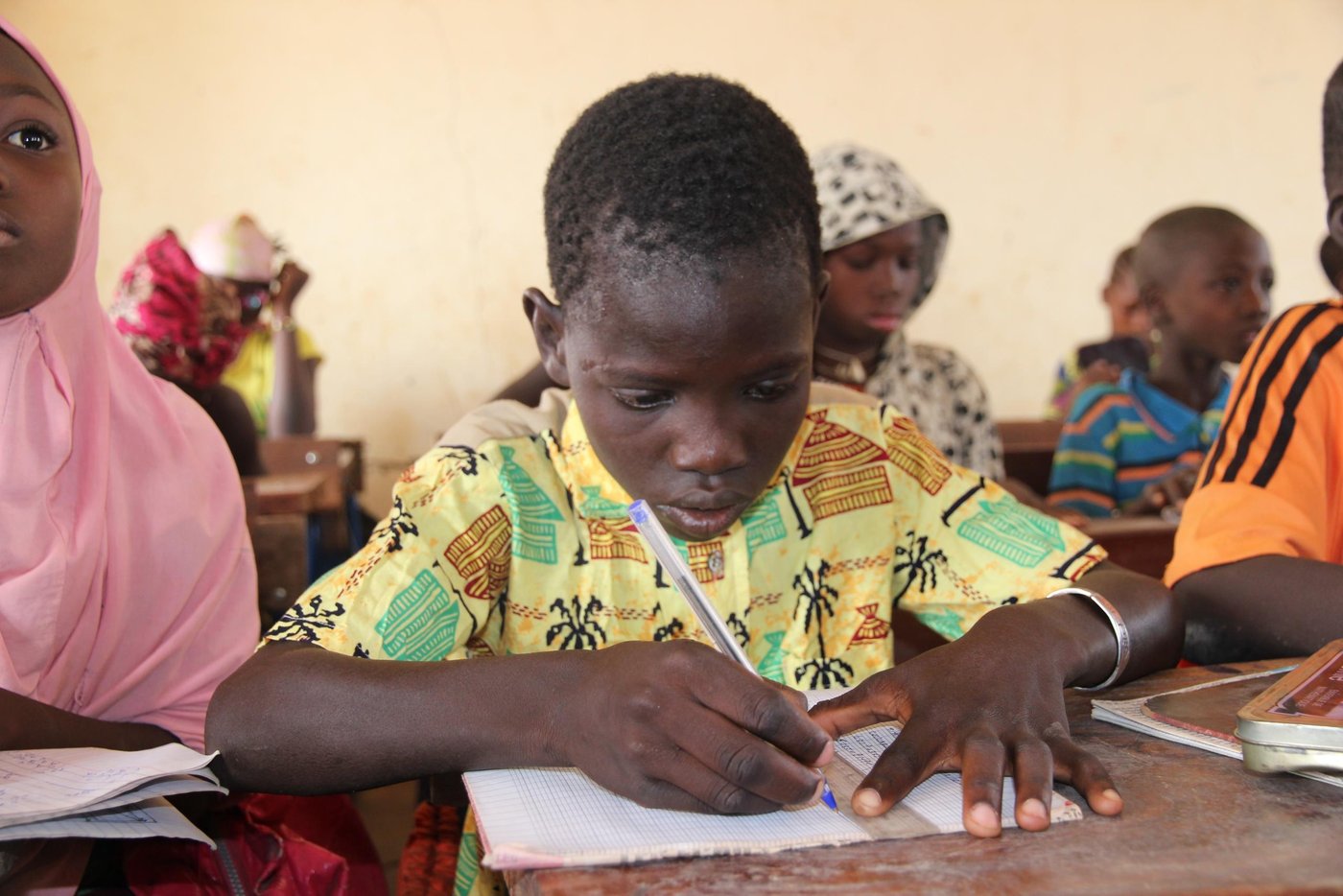
Flyktninger i Burkina Faso
I flyktningleiren Goudebo i nabolandet Burkina Faso, går Salamate Sambo (12) i andre klasse ved Flyktninghjelpens skole i leiren.
Da det brøt ut krig mellom regjeringen og flere opprørsgrupper i Nord-Mali i 2012, var det mange som flyktet ut av landet. I fjor ble det inngått en fredsavtale mellom regjeringen og flere islamistiske opprørsgrupper, men i mange områder er situasjonen fremdeles ustabil. Fortsatt lever over 30.000 maliere som flyktninger i Burkina Faso, blant dem Salamate og familien hennes.
Flyktninghjelpen gir grunnskoleutdanning til over 800 barn i leiren, og driver også utdanningsprogrammer barn og unge i Mentao, den andre store leiren for maliske flyktninger i Burkina Faso.
- Lesing er favorittfaget mitt, sier Salamate, som drømmer om å reise hjem til vennene sine i Mali.
